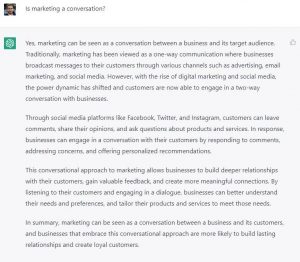Finding SEO keywords isn’t some mysticism you need to decode. According to BrightEdge Research, SEO tactics drive at least 1000% more traffic than social media — and there’s a reason for this. Once you know how to put all the available data into action, solidifying your content marketing plan is pretty straightforward.
Here are 5 clear steps to finding new SEO keywords that prove profitable and put you above the competition.
Analyze your existing keywords.
Head to your favorite keyword analysis platform (SEMrush Keyword Manager works great, and it offers a healthy amount of nuance — but by all means, stick to what you know and love).
Once you’re there, you’ll want to look at four specific types of keywords:
- Shared – Shared keywords are those that you share with your competitors. Which keywords are you both currently working with? While you’re at it, see how you stack up against the others.
- Missing – Missing keywords are those that your competition has, but you don’t. Here, we’re not just analyzing what you have, but also what you don’t have. Be sure to close any holes and include missing keywords in your content marketing plan as you move forth.
- Weak – Weak keywords are those that you don’t rank well for. At the same time, your competition might be ranking high for these keywords — and that’s something you need to look out for. These may be live in older content, but you can refresh that content to revitalize it.
- Strong – Strong keywords are those that are working out well for you. Keep these in mind to note what exactly you’re doing right. Keep sharing content with strong keywords.
Rank your keywords based on their conversion potential.
When talking conversions, there are two main types you want to consider: macro and micro conversions.
Macro conversions are the end goal. They typically include anything that brings in revenue and acquires strong leads.
On the other hand, micro conversions are smaller steps you get the consumer to take, like signing up for a newsletter or engaging with your web content. You get information from them, as well as evidence of their involvement.
Oftentimes, micro conversions build up to macro conversions.
So what do keywords have to do with this? You want to categorize your keywords based on their conversion potential, specifically whether they’re suited for macro or micro conversions. This helps you figure out what type of campaign to use certain keywords on, from landing pages for email capture to white pages with CTAs.
Visualize your SEO keywords with a sitemap.
Sometimes, you have to get your creative wheels rolling in order to develop a firm content plan. Take a good look at your website and develop a sitemap that’s organized by topic and website section.
This helps to see where certain categories of keywords will be most effective. You can also note which part of the map you want to emphasize in upcoming content rollouts.
Whether you provide goods or services, map out your broad offerings. For example, an energy consultancy firm may offer services regarding efficiency, generation and procurement. From there, break down the various parts of each service.
Ultimately, you’ll want to place your keywords in related sections and develop content that serves those conversions.
Study what currently ranks on Google.
Now it’s time to take those keywords to the streets and see what your competition is doing. You want to look at content that’s already ranking in the top 10 of the SERP, and analyze the root of their effectiveness based on four key aspects:
- Intent of the user – User intent is one of the key pieces of Google’s algorithm. You shouldn’t leave it out.
- Keyword competitiveness – Head back to SEMrush to see largely how competitive certain keywords are, or use Google itself to see the number of results per keyword.
- Search volume – At its core, search volume tells us how many other people are talking about this keyword or topic.
- Estimated conversions – Base this on micro or macro conversion rate estimations. You can measure it using the following two formulas:
Total traffic for keywords X Total click-through rate = Website traffic
and
Website traffic X Micro/macro conversion rate for a similar page = Total conversions
Build a content marketing rollout plan.
It may seem like a lot of planning to get to this point, but it’s well worth your while. Without strategy behind your content plan, you may as well have no content at all.
Use your findings to develop a plan for the upcoming months. You can tailor your plan to suit your business’ personal needs, basing it on staff or contractor capabilities and content budget.
Don’t forget to include content refreshes in your plan. If you have a lot of old content that doesn’t line up with your updated rollout plan, it’s best to update it so it serves your brand (instead of merely taking up space on the internet).
Bonus: Pair High-Value SEO Keywords with High-Class Content
Keywords are only half of the picture. The other half? Quality content.
Think of it this way. Finding profitable keywords helps get your content seen. But if that content falls flat, with keywords as its only strength, users won’t stick around for very long. Your bounce rate will increase, and your conversion rate will plummet.
You don’t want that, do you?
Ensure that your content is as valuable to your consumers as the right keywords are valuable to you. With that, success will come.
Digital & Social Articles on Business 2 Community
(71)
Report Post





